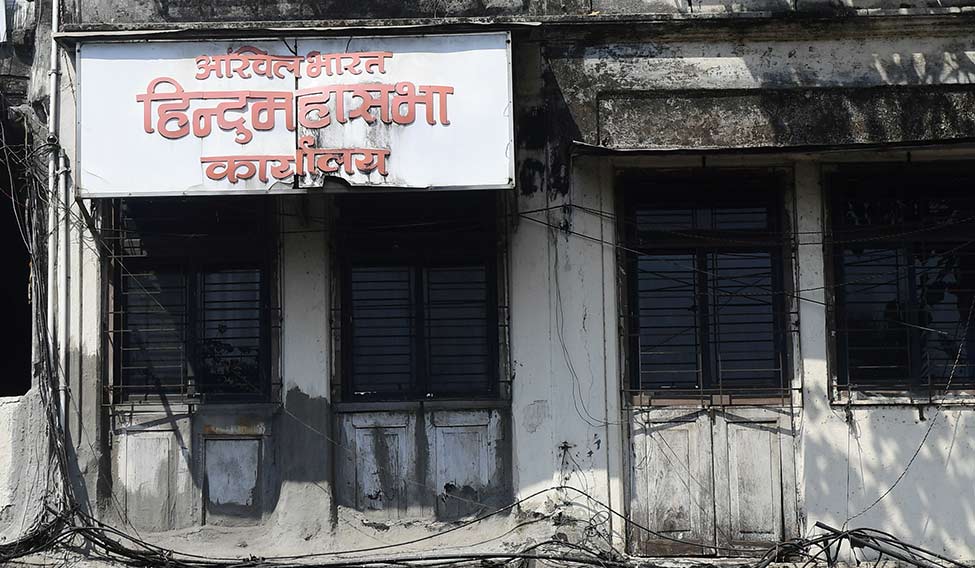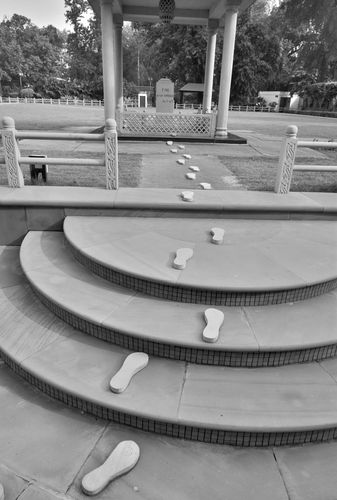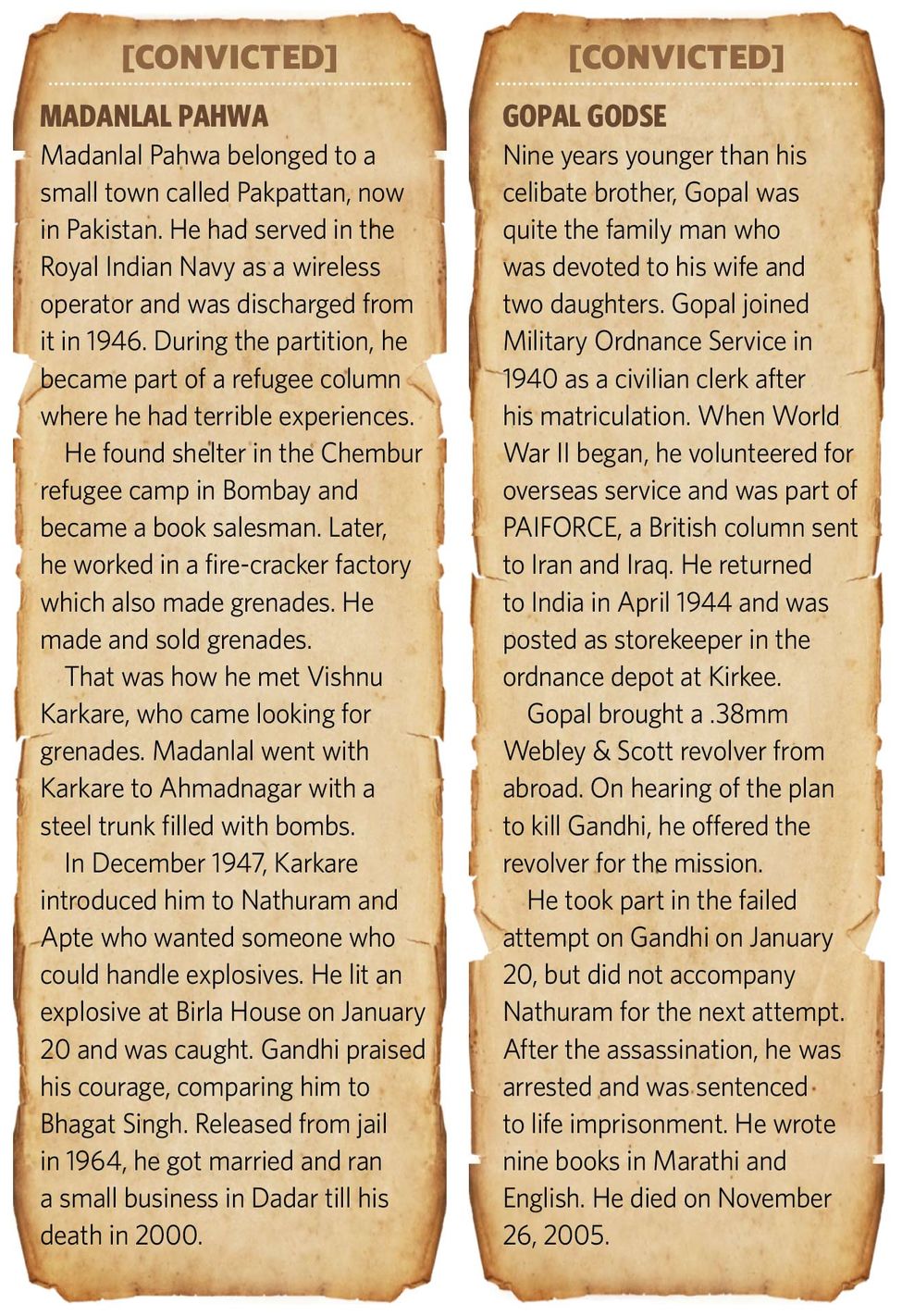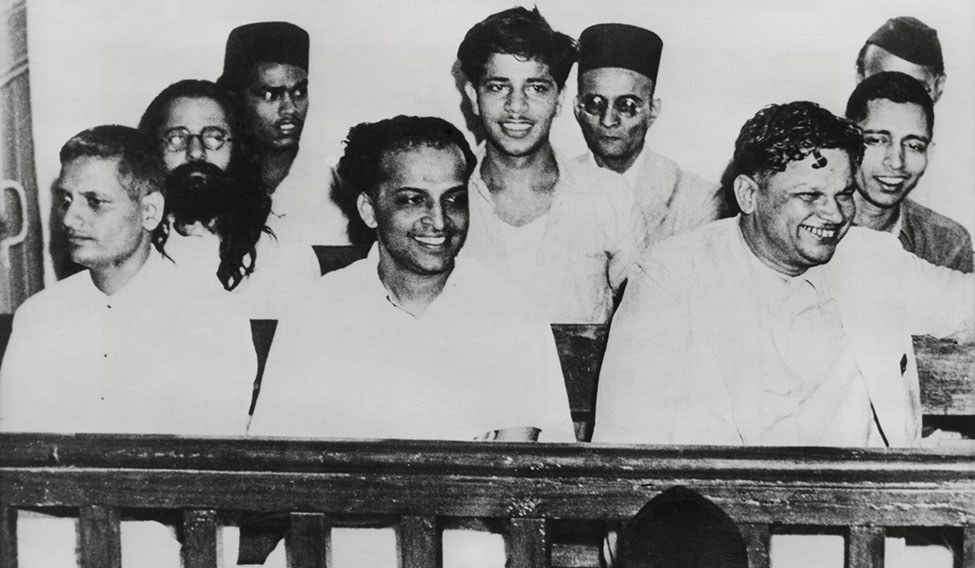Mahatma Gandhi became the target of his killers just 17 days before his death. Had it all gone as per plan, he would have died on January 20.
On January 12, 1948, Gandhi announced a fast with two objectives: to make the government pay Pakistan its share of 055 crore from the cash balance in the Reserve Bank of India; and to foster friendship between Muslims and Hindus who were killing each other. India was at war with Pakistan over Kashmir. Seven million refugees had arrived, angry and miserable. Many of them had seen their family members being murdered, raped or forcibly converted.
On hearing about Gandhi’s announcement, Nathuram Vinayak Godse and Narayan Dattatray Apte, editor and manager, respectively, of the Marathi newspaper Hindu Rashtra of Poona, made the most important decision of their lives—to kill the Mahatma. Active in the Hindu Mahasabha, they had been discussing other ideas to avenge the Hindus—ambushing an ammunition train or attacking the Hyderabad state in commando style. But on January 13, they decided to kill Gandhi.
On the same day, they called on Digamber Badge, an arms supplier in Poona, who agreed to deliver grenades and explosives to them in Bombay. Gopal Godse, Nathuram’s younger brother who was in the army’s ordnance service, offered a revolver for the mission. On January 14, Nathuram and Apte went to Bombay by train. The actress Shanta Modak (Bimba), whom Apte befriended on the train, dropped them at Savarkar Sadan, Hindu Mahasabha leader Vinayak Damodar Savarkar’s house in Dadar. Savarkar was so revered by Nathuram and Apte that even the masthead of their earlier newspaper, Agrani, had his photograph. Nathuram was a close associate of Savarkar from 1929 and had been active in the Rashtriya Swayamsevak Sangh. But, he left the RSS later.
Two other conspirators, Vishnu Karkare and Madanlal Pahwa, met Nathuram and Apte later that day in the Hindu Mahasabha office in Bombay. Karkare was the secretary of the Mahasabha in Ahmadnagar. He had taken Madanlal, a violent young Punjabi refugee from Pakistan, under his wings.
As promised, Badge and his servant Shankar Kistaiya arrived at the Hindu Mahasabha office with explosives. Badge also joined the conspirators, seeing in it a business opportunity. After the murder, he turned against them and testified that Nathuram and Apte had met Savarkar before flying to Delhi on January 17.
Gopal Godse reached Delhi with a service revolver on January 19. The conspirators’ armoury now consisted of a .38mm revolver, a .32mm revolver, five hand-grenades fitted with seven-second fuses and two gun-cotton slabs with 90-second fuses. The plan was to shoot down Gandhi at his prayer meeting in Birla House on January 20.
 Savarkar Sadan in Mumbai | Amey Mansabdar
Savarkar Sadan in Mumbai | Amey Mansabdar
Writes Manohar Malgonkar in his book The Men Who Killed Gandhi:
“One of the gun-cotton slabs would be exploded by Madanlal who, after lighting the ninety-second fuse, would go and join the others around Gandhi, ready to throw a grenade at him.
“When the report of the blast was heard Badge would fire Gopal’s service revolver at Gandhi through the ventilation-grille that he had been shown in the morning, and Shankar, who would have managed to worm his way close to Gandhi, would, at point blank range, pump into him the remaining three bullets in the chamber of Badge’s .32. Immediately after emptying his revolver, Badge would push a grenade through the ventilation-grille with the barrel of his revolver. The revolver shots would be the signal for the other grenade-throwers to hurl their grenades in general direction of Gandhi. For this purpose, the five grenades would be distributed, one each to Badge, Shankar, Karkare, Madanlal and Gopal. Neither Apte nor Nathuram would carry any arms, but it would be their business to guide the operation by giving signals.”
But the plan failed—Badge did not fire, after Madanlal had exploded the gun-cotton slab 75 feet away from the dais where Gandhi sat. As Badge fled and the police caught Madanlal, their accomplices mixed with the crowd and escaped, without using their grenades.
The Delhi Police raided two places mentioned by Madanlal—the Hindu Mahasabha Bhavan and Marina Hotel in Connaught Place where Nathuram and Apte were staying. But, by then, both had left Delhi. They went to Bombay via Kanpur and Allahabad.
When caught, Madanlal said, ‘Phir Ayega’ (They will come again). He told the police that Karkare and the proprietor of Hindu Rashtra had plotted the murder. Madanlal used to work for a professor, Dr J.C. Jain, as his books’ salesman. Dr Jain met the home minister of Bombay, Morarji Desai, on January 21 and told him that Madanlal had hinted to him that he was going to Delhi to kill Gandhi and that a man called Karkare from Ahmadnagar was involved in it. Savarkar’s name was also mentioned by Jain. Morarji Desai summoned J.D. Nagarvala, Bombay’s deputy commissioner in charge of intelligence, and passed on the information. Though known as an efficient officer, Nagarvala made little use of it.
After the murder attempt, the Delhi Police deployed a few more policemen in plainclothes at Birla House gates, but Gandhi disallowed any frisking of people coming to his prayer meetings. The police sent two officers to Bombay with a copy of Madanlal’s statement in Urdu, which none of the senior police officers in Bombay could read. Nagarvala gave little help to the officers from Delhi—he said some people were trying to kidnap Gandhi, not kill him.
 Meeting spots: Hindu Mahasabha office | Amey Mansabdar
Meeting spots: Hindu Mahasabha office | Amey Mansabdar
When the two officers came back to Delhi on January 24, Intelligence Bureau director T.G. Sanjevi sent for U.H. Rana, deputy inspector-general of police (CID), Bombay, who happened to be in Delhi then. Sanjevi gave Rana a copy of Madanlal’s full statement (with an English translation) on January 25, and asked him to take the report to Nagarvala for finding the people mentioned in it. Instead of taking a flight or a direct train to Bombay, Rana took a longer train journey via Allahabad, where he took a dip at Triveni. Upon reaching Bombay, he went to see Nagarvala and gave him the full report. But Nagarvala still believed in the kidnapping theory. His report reached Sanjevi a day after the murder.
On January 24, Nathuram decided that he would pull the trigger—he did not want to depend on anyone. Apte and he raised a loan of Rs 10,000 overnight, flew to Delhi on January 27, and from there went to Gwalior to buy a gun. Sadashiv Parchure, a doctor who was secretary of the Hindu Mahasabha in Gwalior, helped them get a 9mm Beretta semi-automatic pistol for Rs 300 from a man called Gangadhar Dandwade. Returning to Delhi, they stayed in a retiring-room at Old Delhi railway station, where Karkare joined them. On January 29, Nathuram visited Birla House along with Apte and Karkare, and then practised with the pistol in a jungle behind Birla Mandir.
On the day he was killed, Gandhi left his room around ten past five for the evening prayer meeting. Supported by his grandnieces Manu and Abha, he walked across to the raised portion of the lawn where 500 people waited for him. As Gandhi raised his hand to greet the crowd, Nathuram folded his hands, said ‘Namaste’ and put three bullets into the Mahatma. Nathuram was caught and beaten up. Apte and Karkare escaped from the spot.
The legendary American reporter Vincent Sheean writes in his book Lead, Kindly Light:
“I got a taxi and went out to Birla House in time for the prayer meeting.... It was not yet five o’ clock and people were still streaming in on foot, in cars and with tongas. As I came on to the prayer-ground at the end of the garden I ran into Bob Stimson, the Delhi correspondent of BBC.... He looked at his watch and said: ‘Well, this is strange. Gandhi is late. He is practically never late.’
“We both looked at our watches again. It was 5:12 by my watch when Bob said: ‘Here he is.’
“It was one of those shining Delhi evenings, not at all warm but alight with promise of spring.... The Mahatma advanced toward us over the grass, leaning lightly on two of ‘the girls’, with two or three other members of his ‘family’ behind them.... It was not a warm evening and he was wrapped in homespun shawls. He passed by us on the other side and turned to ascend the four or five brick steps which led to the terrace or prayer-ground.
“Here, as usual, there was a clump of people, some of whom were standing and some of whom had gone on their knees or bent low before him....
“Then I heard four small, dull, dark explosions. ‘What’s that?’ I said to Bob in sudden horror. ‘I don’t know’, he said. I remember that he grew pale in an instant. ‘Not the Mahatma!’ I said and then I knew.
“Inside my own head there occurred a wavelike disturbance which I can only compare to a storm at sea—wind and wave surging tremendously back and forth.... I recoiled upon the brick wall and leaned against it, bent almost in two. I felt the consciousness of the Mahatma leave me then—I know of no other way of expressing this: he left me.”
The murder investigation was carried on by Nagarvala as the special additional superintendent of police, Delhi. On January 31, the Bombay Police took Badge into custody—he sang and turned approver. Apte and Karkare, who were on the run, were arrested from Bombay later, and Gopal was arrested from Poona.
 Last walk: Steps to the Martyr’s Column in Birla House, Delhi, where Gandhi was shot | Sanjay Ahlawat
Last walk: Steps to the Martyr’s Column in Birla House, Delhi, where Gandhi was shot | Sanjay Ahlawat
Badge testified that Nathuram, Apte and he had visited Savarkar Sadan on January 17. He said that he was told to stay back as Nathuram and Apte went inside, and that he heard Savarkar say “Yashasvi houn ya [Be successful]” while bidding them farewell. According to Badge’s testimony, Apte told him while returning from Savarkar Sadan: “Tatyaravani ase bhavishya kale ahe ki Gandhijichi sambhar varse bharali—ata apale kam nishchita hamar yat kahi sanhya nahi [Tatyarao (Savarkar) has predicted that Gandhi’s 100 years are over. There is no doubt the work will be successful].”
Savarkar was arrested on February 5, 1948 and the murder trial commenced in a special court in a military building in Red Fort on June 22, 1948. Eight months later in February, the special judge Atma Charan of the Indian Civil Service gave the death sentence for Nathuram and Apte; life imprisonment for Karkare, Madanlal, Gopal, Parchure and Shankar and pardon for the approver Badge. Savarkar was declared ‘not guilty’. Parchure and Shankar were soon let off by the High Court.
“There was no tangible evidence linking him [Savarkar] to the actual assassination,” says Arun Gandhi, the Mahatma’s grandson. “But he planted the idea, encouraged its growth. If a father brings up a child to be a murderer, the law will not punish the father but the son, because he committed the actual act. But morally, the father is as guilty as son.”
On November 15, 1949, Nathuram and Apte were hanged to death in Ambala prison. They were cremated in an open ground within the jail, which was then ploughed up and planted all over with grass, so as to prevent any monument ever being put up on the exact spot of cremation.
As the lifers were released in 1964, they were welcomed back to Poona with fanfare. This led to a public outrage and to the formation of the G.S. Pathak Commission, to get to the facts about the murder. But when Pathak became Union law minister, the Justice Jivanlal Kapur Commission was appointed in November 1966.
The Kapur Commission examined 101 witnesses and 407 documents, and it was provided with certain evidences that had not been produced in the trial court. Savarkar’s close aides Appa Ramachandra Kasar and Gajanan Vishnu Damle told the commission that Nathuram and Apte had met Savarkar on January 17, 1948. Kasar testified that the conspirators had visited Savarkar again on January 23, after their first attempt to murder. The commission’s report, submitted in 1969, criticised the police for negligence. In conclusion, it said, “All these facts taken together were destructive of any theory other than the conspiracy to murder by Savarkar and his group.”
It is this conclusion that Pankaj Phadnis wants to disprove.








